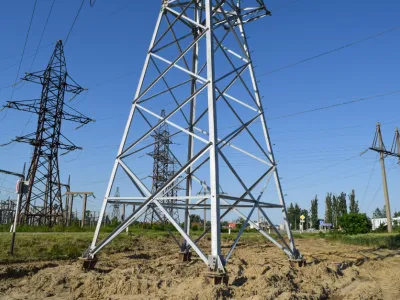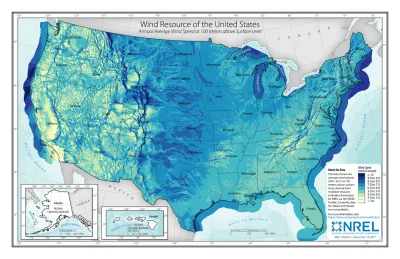Electricity Transportation: Why more transmission highways are needed

In the first blog post of this series, The Energy Highway: How electricity reaches your home, we introduced the general components of the electric grid: generation, transmission, and distribution. Together, these systems form a network that produces electricity and transports it to your home and the businesses you frequent. This post focuses on the transmission “highways” that connect the generation and distribution systems.
Transmission plays an extremely important role in transporting energy to where it is needed, no matter the source of electricity generation. As with many major infrastructure systems, the aging transmission grid requires ongoing maintenance to function properly – and simply keeping up with repairs is not enough. As Minnesota replaces aging power plants and transitions towards a decarbonized energy system, expanding transmission infrastructure will increase reliability and bring more low-cost energy to utility customers.
Low-Cost Energy: Why new transmission highways are essential to renewable energy development
When the transmission system was initially constructed, it was not designed with renewable energy resources in mind. Solar and wind developments must be located where the wind is blowing and the sun is shining. In order to bring new low-cost renewables onto the grid, transmission must be available where natural resources are most prevalent. As illustrated below, wind and solar resources are not evenly distributed across the United States. In fact, many wind and solar resources are in areas geographically distant from major population centers.


Renewable energy resources—specifically wind and solar—are some of the lowest-cost generation options currently available on the market. As recently calculated by financial advisory firm Lazard, wind and solar are cost-competitive with fossil fuels even before accounting for any subsidies. Federal tax subsidies further lower the cost of utility-scale solar energy to approximately $0-$80 per megawatt-hour. Wind energy can be even more cost-effective, with levelized costs of $0-$66 per megawatt-hour. By comparison, the levelized cost of energy produced by coal is $64-$171 per megawatt-hour, partially due to the need to continuously purchase fuel to keep the plants operating. Natural gas combined cycle plants (gas plants typically used to satisfy constant energy demand) cost between $33-108 per megawatt-hour.
Once a wind turbine is built or a solar panel is installed, it does not need additional fuel in order to produce electricity. In contrast, traditional power plants require a constant supply of coal or natural gas in order to operate. These fossil fuel resources are subject to the demands of the market, which can cause dramatic cost fluctuations for customers. We saw the impacts of these changing fuel costs across the country when natural gas prices spiked in February 2021 during Winter Storm Uri. Over a period of only a few days, natural gas market costs skyrocketed, reaching as high as 6900 percent (pdf) above the five-year average price. This single weather event caused gas utilities in Minnesota to incur nearly $660 million in natural gas costs. Even when the price shock caused by Uri passed, gas prices remained high in 2021 and 2022, which impacted how much utility customers were paying for energy. Building new transmission lines and adding renewable resources to the grid can reduce exposure to these sorts of fuel risks and help stabilize energy costs.
Despite the cost differences and environmental benefits associated with renewable energy, the lack of transmission assets creates a bottleneck that limits how much renewable energy can be incorporated onto the grid. Just like a highway crowded with rush-hour traffic, existing power lines do not have enough capacity to transmit all available (and planned) wind and solar power. Without enough space on transmission highways to connect renewable resources to geographically distant population centers, electricity produced by the wind and sun can’t make it to where it needs to go. This transmission congestion has a cost – to the tune of an estimated $13.3 billion nationwide in 2021. Investing in new transmission resources can help address this issue of congestion and bring more low-cost energy to customers.
Regional Energy Transfers: Facilitating the flow of affordable energy
Adding more transmission lines will help increase the reliability of the grid, provide more re-routing options, and allow low-cost energy to flow into areas where energy costs are high. This is extremely important during extreme weather events. Winter Storm Elliott, which swept across the United States from December 22-26, 2022, provides a prime example of how additional transmission could provide tangible economic benefits. Like Winter Storm Uri, Elliott brought with it near-record low temperatures at the same time fossil fuel power plants suffered equipment failures and natural gas supply constraints. The result? Rolling blackouts across the Southeast and massive spikes in the cost of electricity. The American Council on Renewable Energy (pdf) estimated that expanding interregional transmission could have combated these impacts and produced upwards of $450 million in benefits during the 5-day event.
Even during more normal weather conditions, increasing the transmission capacity between regions will allow lower-cost energy to flow from areas where it is abundant to the places where it is needed. This is increasingly important as we rely more on weather-dependent generation resources. Even when calm winds or cloud cover (including wildfire smoke) reduce renewable generation in Minnesota, it could be windy or sunny elsewhere. Transmission bottlenecks are preventing low-cost electricity from being shared adequately throughout the Midwest, causing regionally high prices.
Expanding the transmission system will help to lower overall energy prices, reduce the magnitude of future price spikes, and contribute to a more stable electric grid.
Grid Reliability: Rerouting electricity when things go wrong
When the electric grid works as intended, the efforts that go into maintaining reliability may go unnoticed. But what happens when there is an interruption in the energy system, such as downed power lines or unexpected power plant outages? Thankfully, these issues are usually isolated and don’t impact the broader grid. A tree falling on the distribution lines near your house may prevent you from using electricity until the issue is fixed, but that won’t limit other customers’ energy access in nearby neighborhoods. The same goes for disruptions on a broader scale. For example, when a transmission line is impacted by severe weather and is unable to serve as an electricity highway, the grid doesn’t shut down. Instead, electricity is re-routed to avoid the issue, just like how you might take a detour to avoid a road closure. As the Union of Concerned Scientists explains, this re-routing function acts as a “redundancy” that provides “multiple ways to get power from the generating resources to your light switch.” By diverting energy along transmission highways that remain open, grid operators can keep providing customers with electricity even when things go wrong.
What’s Next?
The Midcontinent Independent System Operator, which operates the transmission grid in Minnesota and throughout the Midwest, recently approved a set of transmission plan projects to strengthen the grid, increase renewable energy access, and provide benefits to customers. Our third and final blog post will address the costs and benefits of these transmission projects—specifically those located in Minnesota—and why they are good investments.